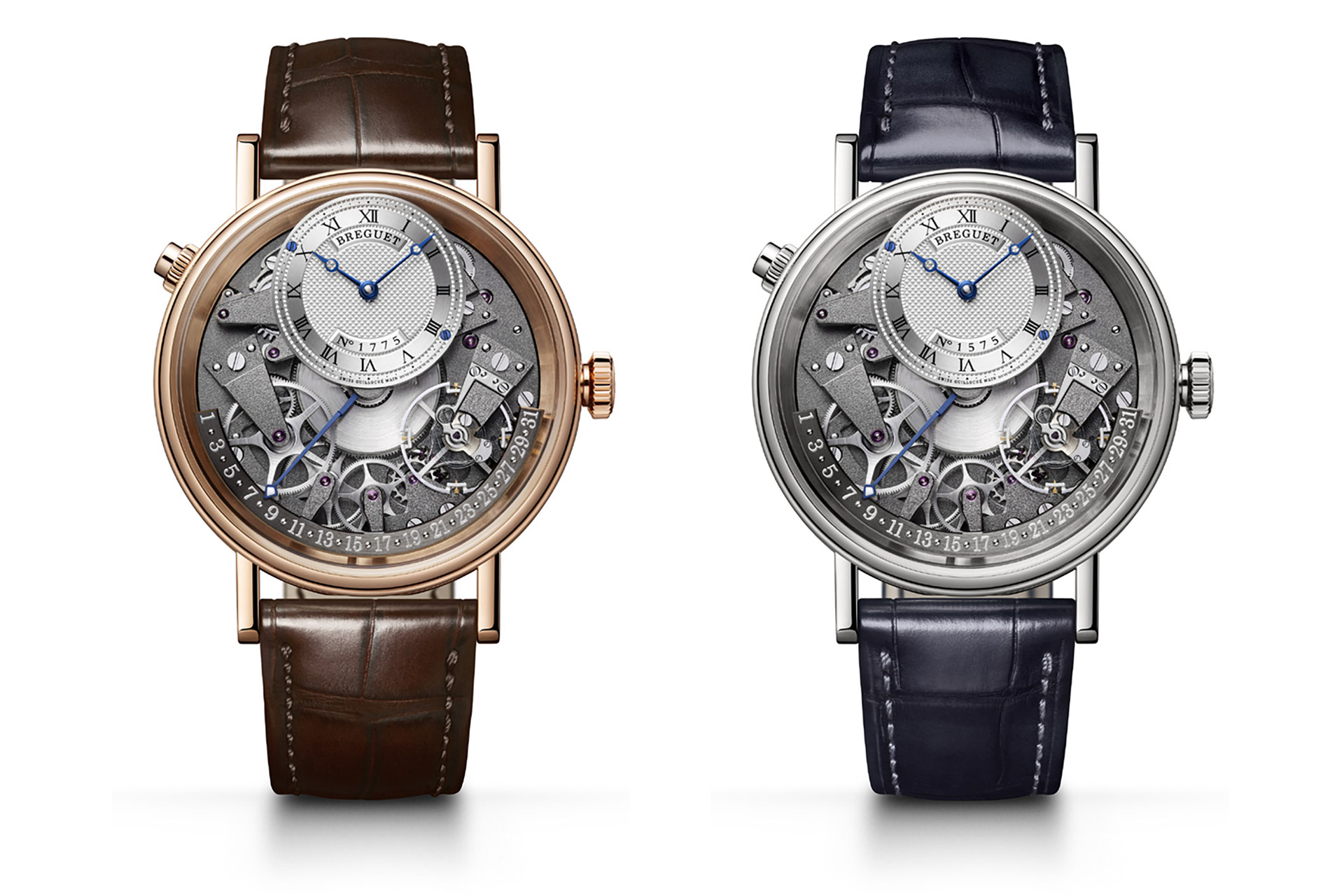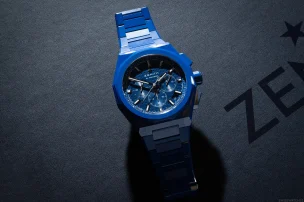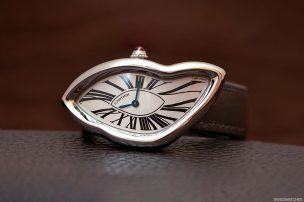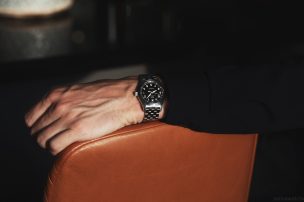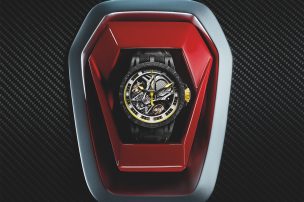
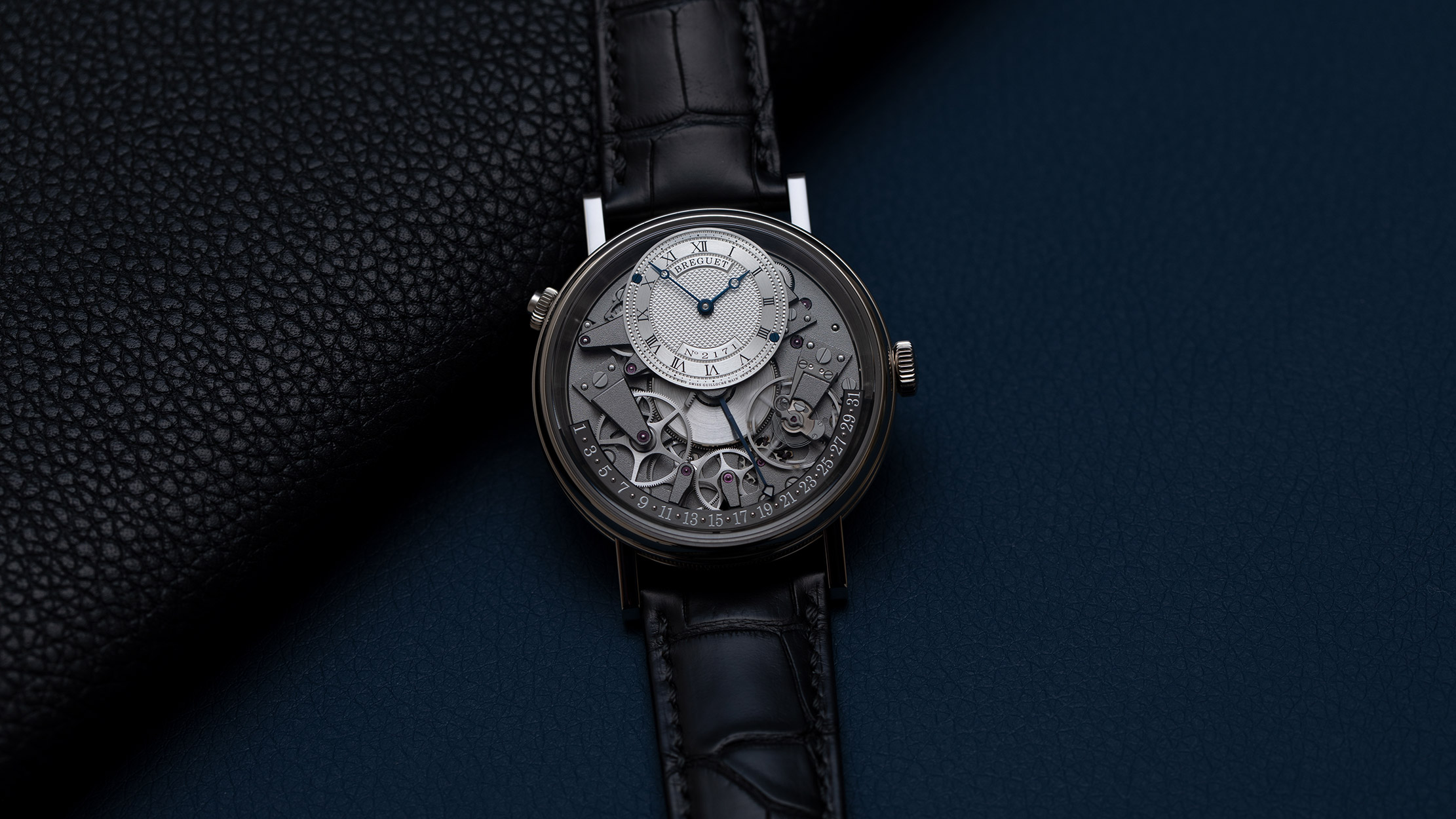
Avant-garde – Breguet’s new Tradition Quantième Rétrograde 7597
Every fan of Breguet will be well aware of the background to the horology house’s Tradition line. After all, it’s a story that has been shared extensively across the years. Meanwhile, for all those who are new and unaware, it is worth taking a quick trip back to the 18th century, before we get to the new Tradition Quantième Rétrograde 7597 – for the first time with a retrograde date display that is quite the stunner itself.
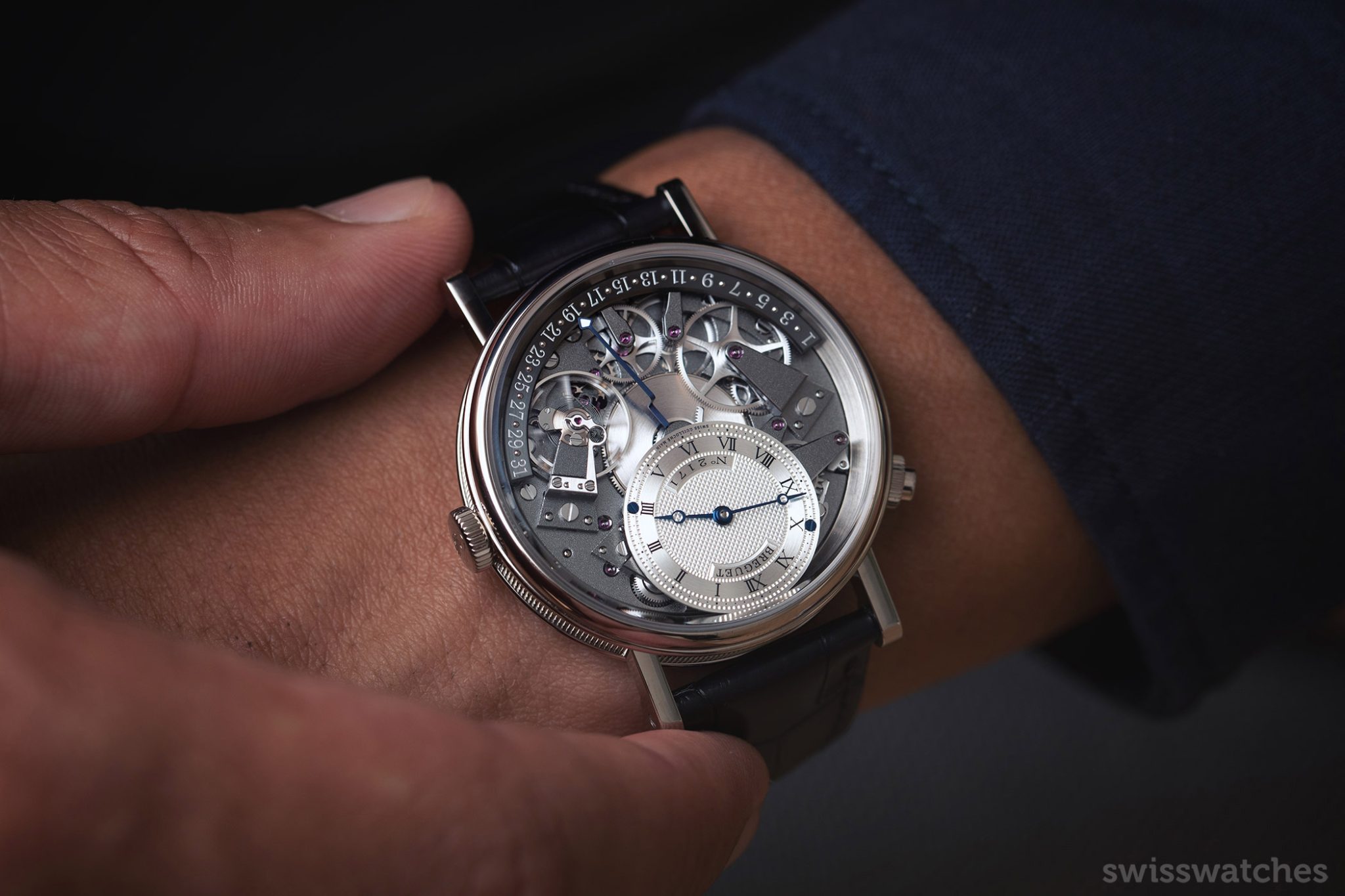
Again, Breguet aficionados will know that the Classique 3797 and Classique 3795 models already had a retrograde date display. But the display on the Classique model is far from being as spectacular as this one. To set the scene already – the new Tradition Quantième Rétrograde 7597 is anything but your customary aristocratic watch.
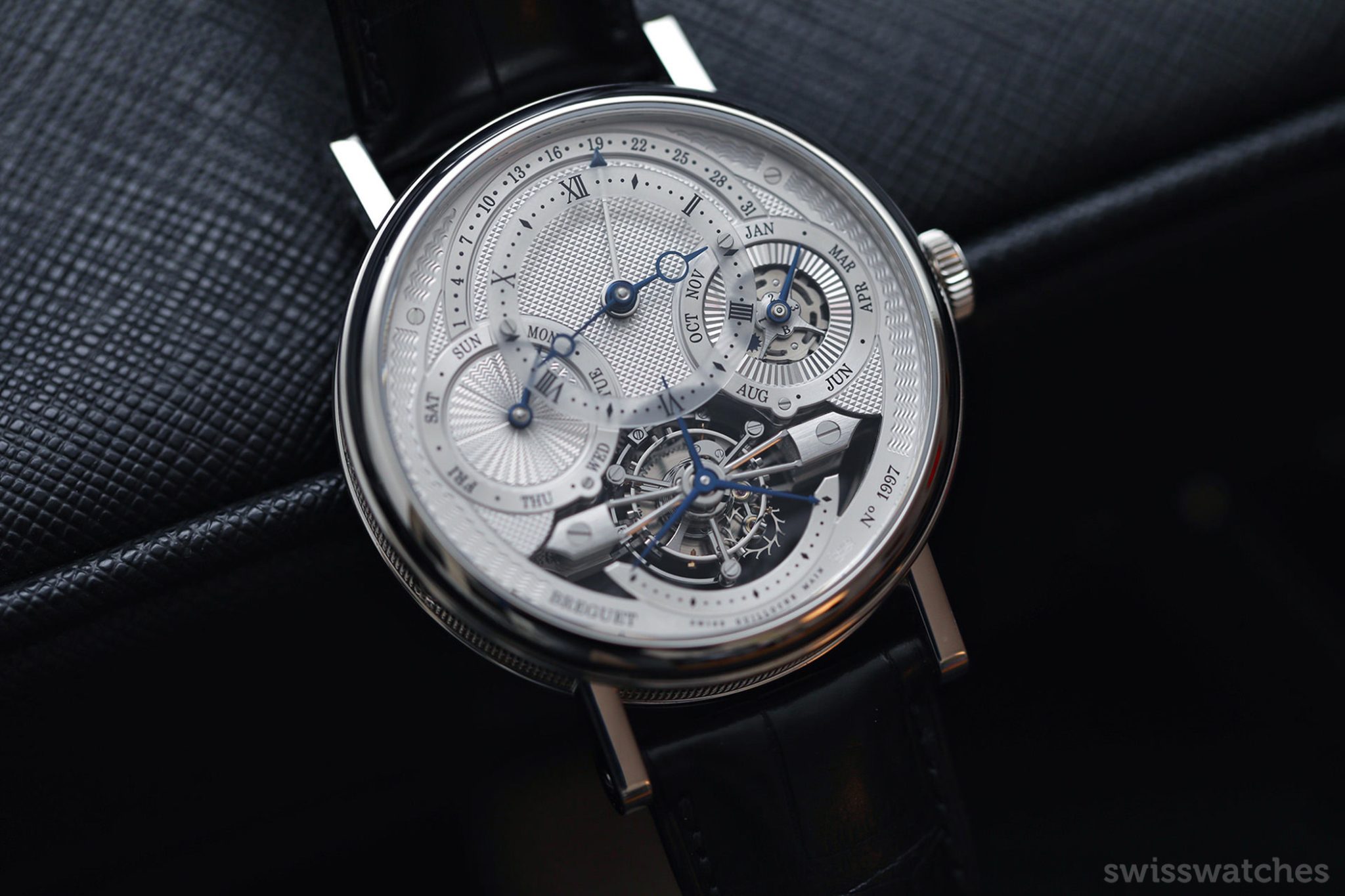
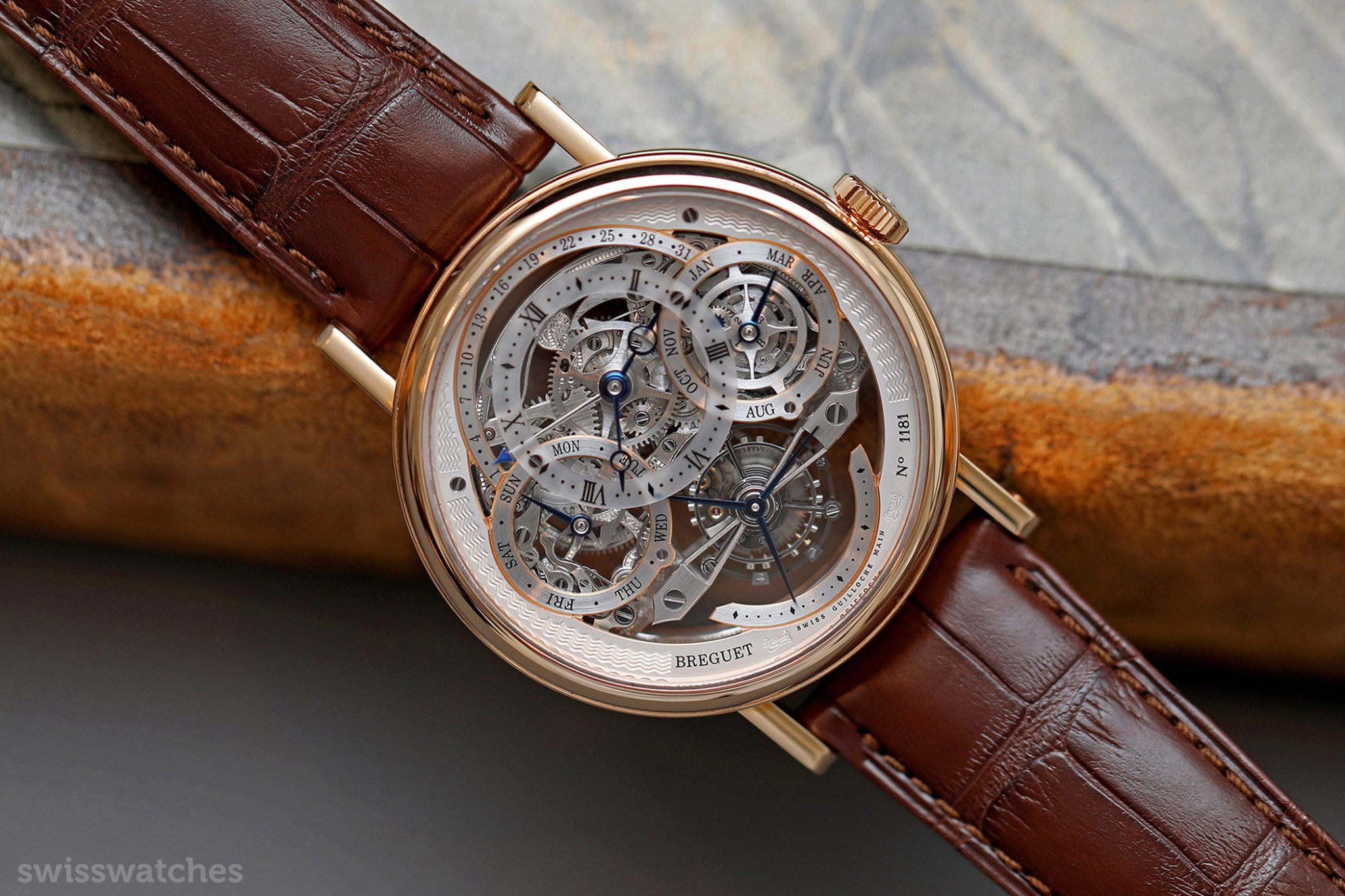
Subscription watches
Ever heard of a subscription? Anyone who likes to drink wine from Bordeaux may have heard the term in this context. Every promising vintage wine is, of course, highly sought after by renowned wine dealers, but given that such wines have to mature in the barrel for some time after the harvest, customers can apply for a so-called subscription. They pay a deposit for the wine, which is then delivered a number of years later, when it has matured long enough and according to regulations. This also enables the winegrowers to cope with the additional costs for the lengthy production process, as they would otherwise have no income throughout the process.
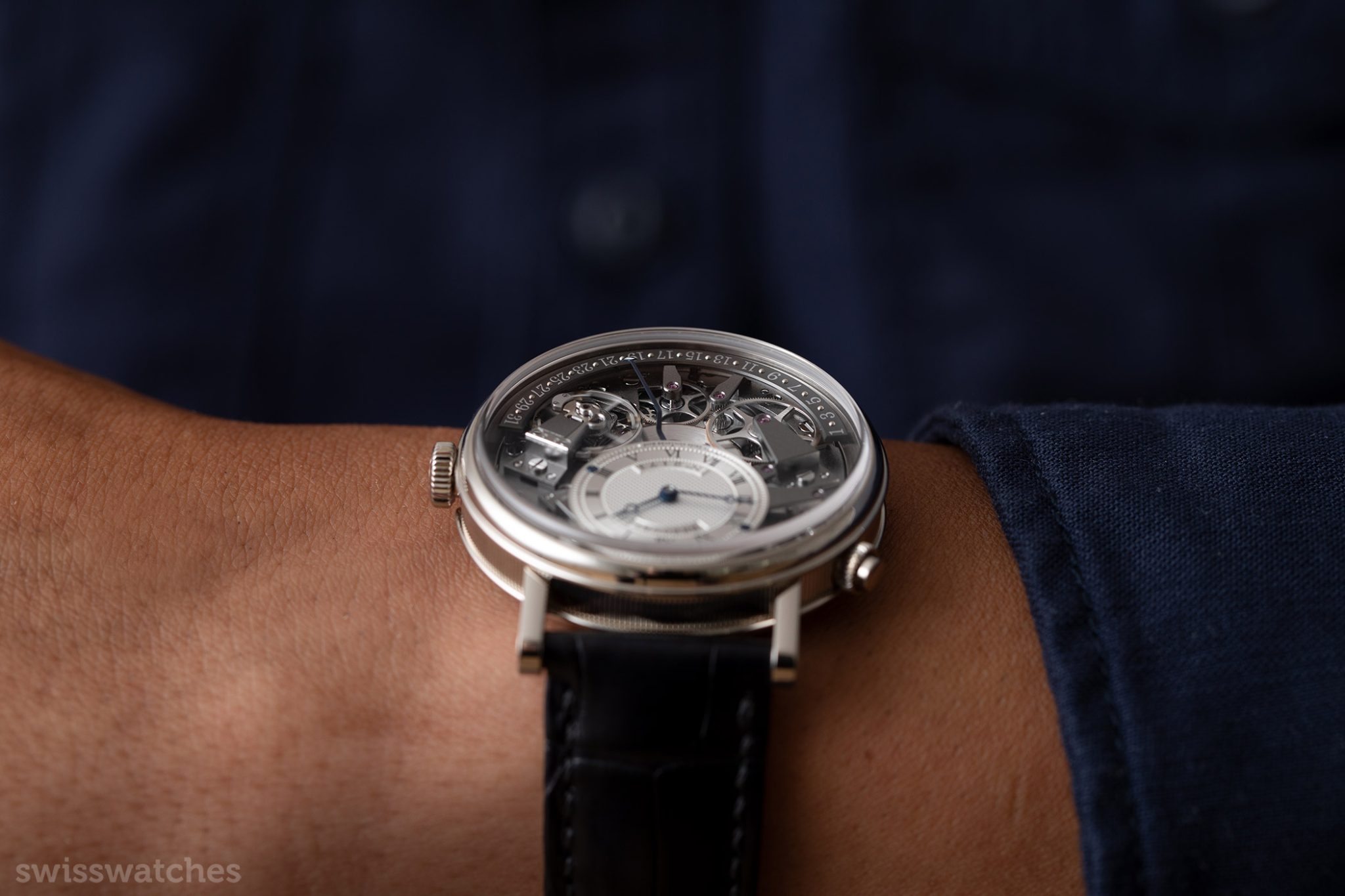
Meanwhile, in the watch industry, the idea of subscription stems back to the watchmaker A.-L. Breguet and was actually born out of necessity. As a result of the French Revolution, much of his distinguished aristocratic clientele disappeared. Therefore, he decided to offer the bourgeoisie – and thus a new clientele – his watches on the basis of subscription. A quarter of the watch’s price was paid in advance, funding manufacture, and the rest was paid when the watch was handed over. This enabled Breguet to cover the main costs and keep production going. Around 700 watches were produced in this way.
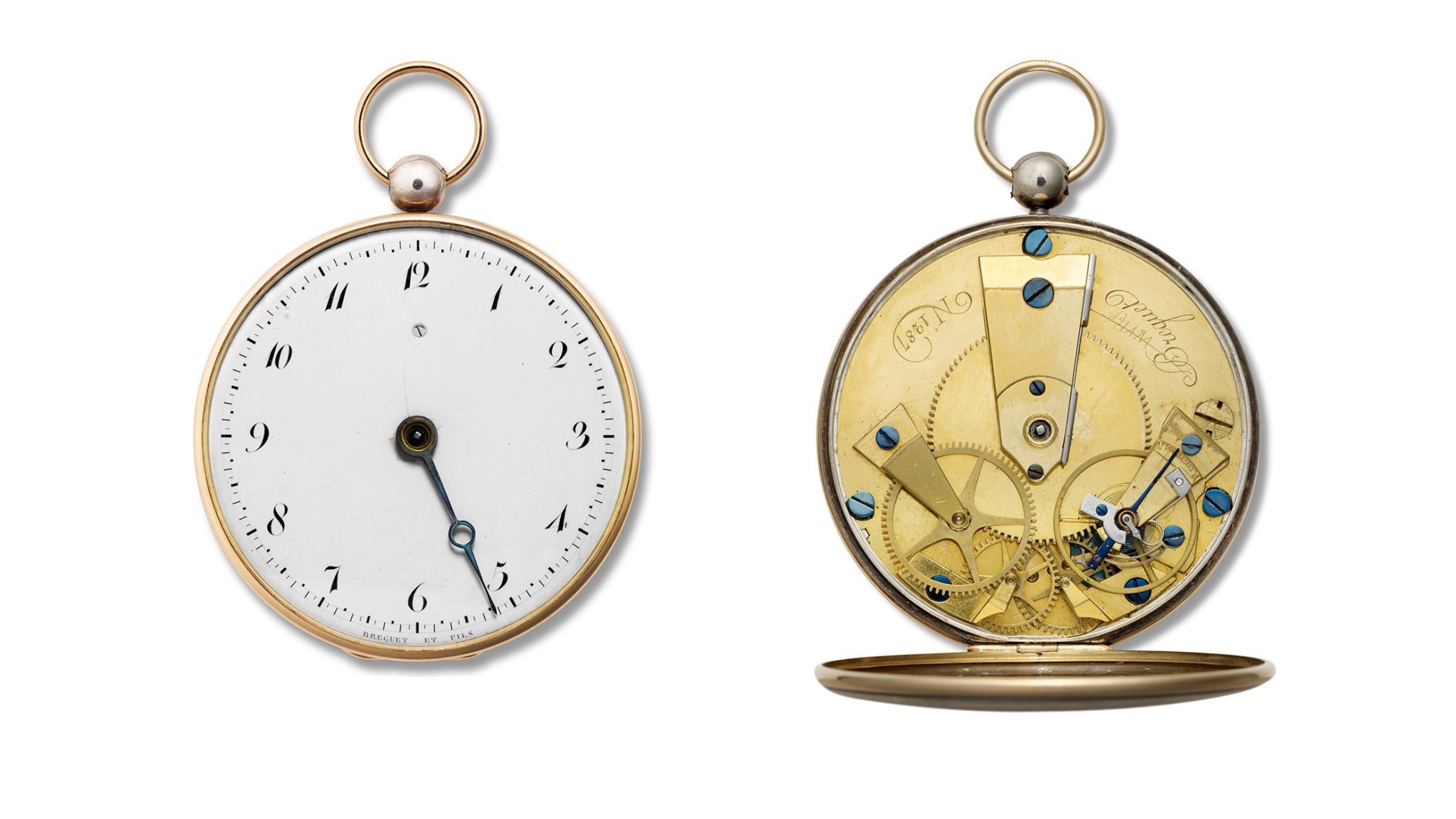
However, since the demand at that time was for simple watches, Breguet created the single-handed watch in 1796, which indicated both the hours and minutes by means of a single hand. This was an amusing twist of fate, bearing in mind that Breguet later became revered for his countless inventions and produced highly complex movements. But he was also a strategist who knew how to market his watches according to the time. In 1799, touch watches (montre à tact) were introduced, which made it possible to physically feel the approximate time, which was not only helpful in the dark, but also allowed the blind to know the time. It also made for a cost-effective alternative to the costly repetition watches.
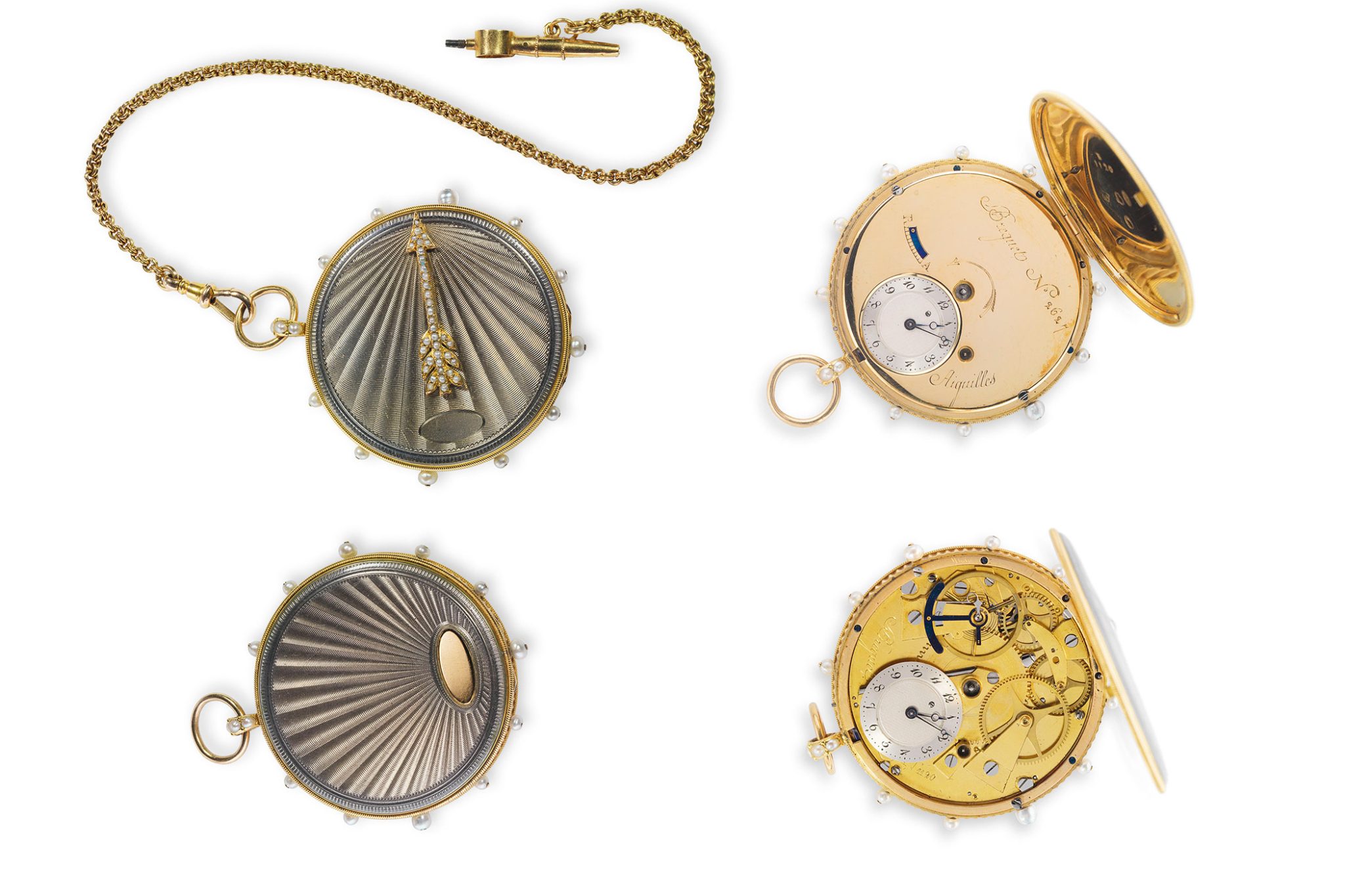
Exposed movements
The single-hand and touch watches provided a new way of arranging movement components. The mainspring barrel earned its place in the center of the movement, while the balance wheel and the main transmission wheel were arranged symmetrically to each other between 4 and 8 o’clock. Meanwhile, on the touch watches, a small, decentralised dial was added. The construction was both simple and appealing – and it is for this reason that the maison dedicated the Tradition line to this style of construction in 2005. It is a symbiosis of tradition and modernity and is something the maison has continued to build upon over the last 20 years. Of course, the brand was able to draw on its founder’s incredible inventiveness, but by no means was it willing to stop there.
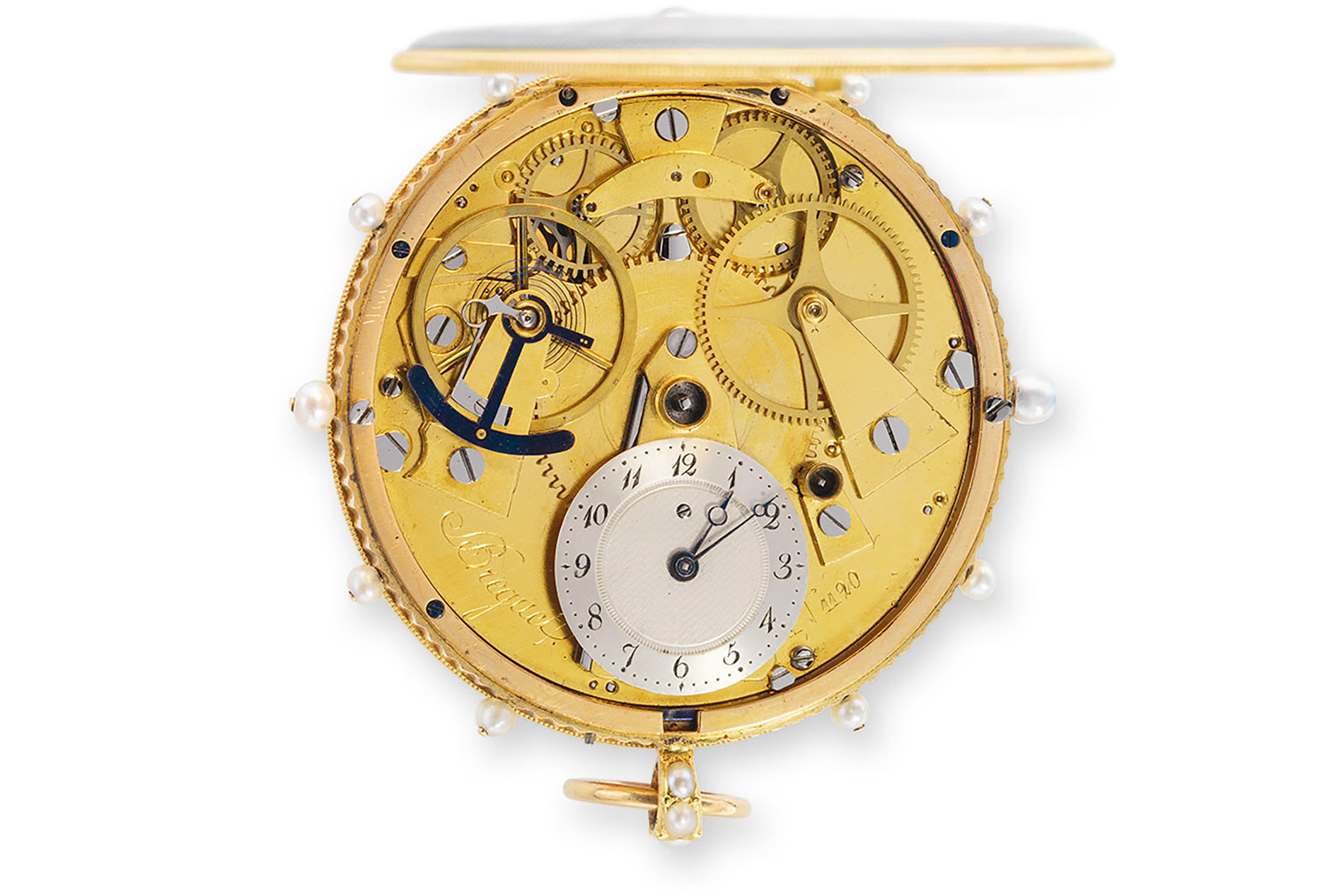
Returning to Breguet, the watchmaker moved on to produce innovations such as the keyless winding mechanism, the “Parachute” shock absorber, Breguet hands, and the tourbillon. Meanwhile, since the acquisition of Breguet by the Swatch Group in 1999, new achievements include the likes of the silicon escapement wheel and lever, magnetic striker regulator, high frequency movements (10 Hz), and the magnetically suspended balance pivot.
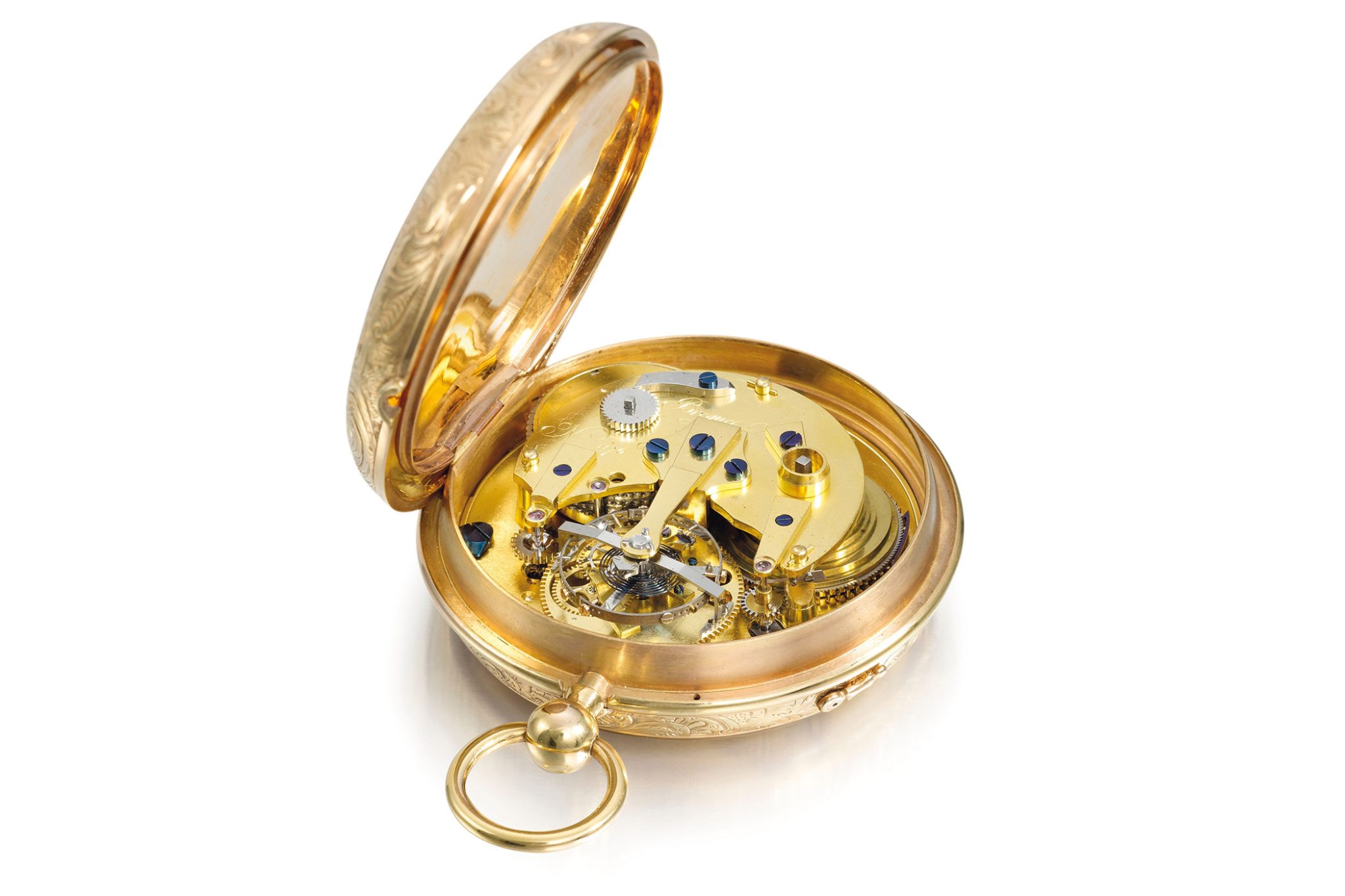
Breguet Tourbillon No. 1176. Breguet Museum Collection
The Tradition 7027, presented in 2005, was the first wristwatch to feature the movement of the single-hand watches, i.e. the entire movement is above the plate and can be viewed from the dial side. The architecture was elegantly dealt with, in terms of which movement components should take the stage between the dial and bridges. Unlike the single-hand watches of that time, the models of the Tradition also have a minute hand, as seen in the touch watches from 1799 on.
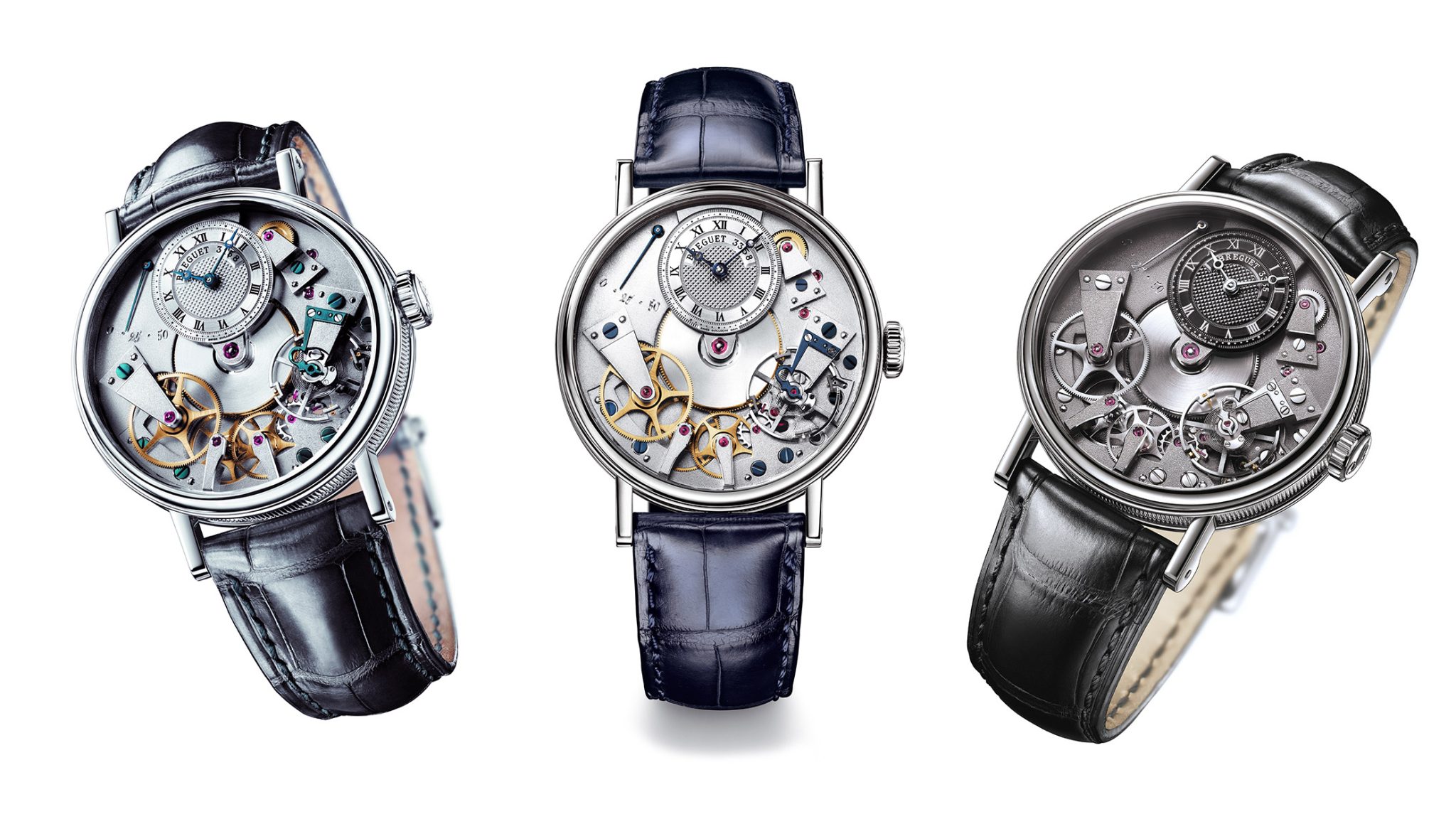
The new Tradition Quantième Rétrograde 7597
The new Tradition Quantième Rétrograde 7597 is either available in a 40 mm white- or rose-gold case. The bridges, wheels, pallet lever escapement and mainspring barrel are mounted in front of the plate in true Tradition style, so that they are all visible to the wearer from the dial side. As the owner of one of these watches, you can pretty much give a lesson on how a watch works.
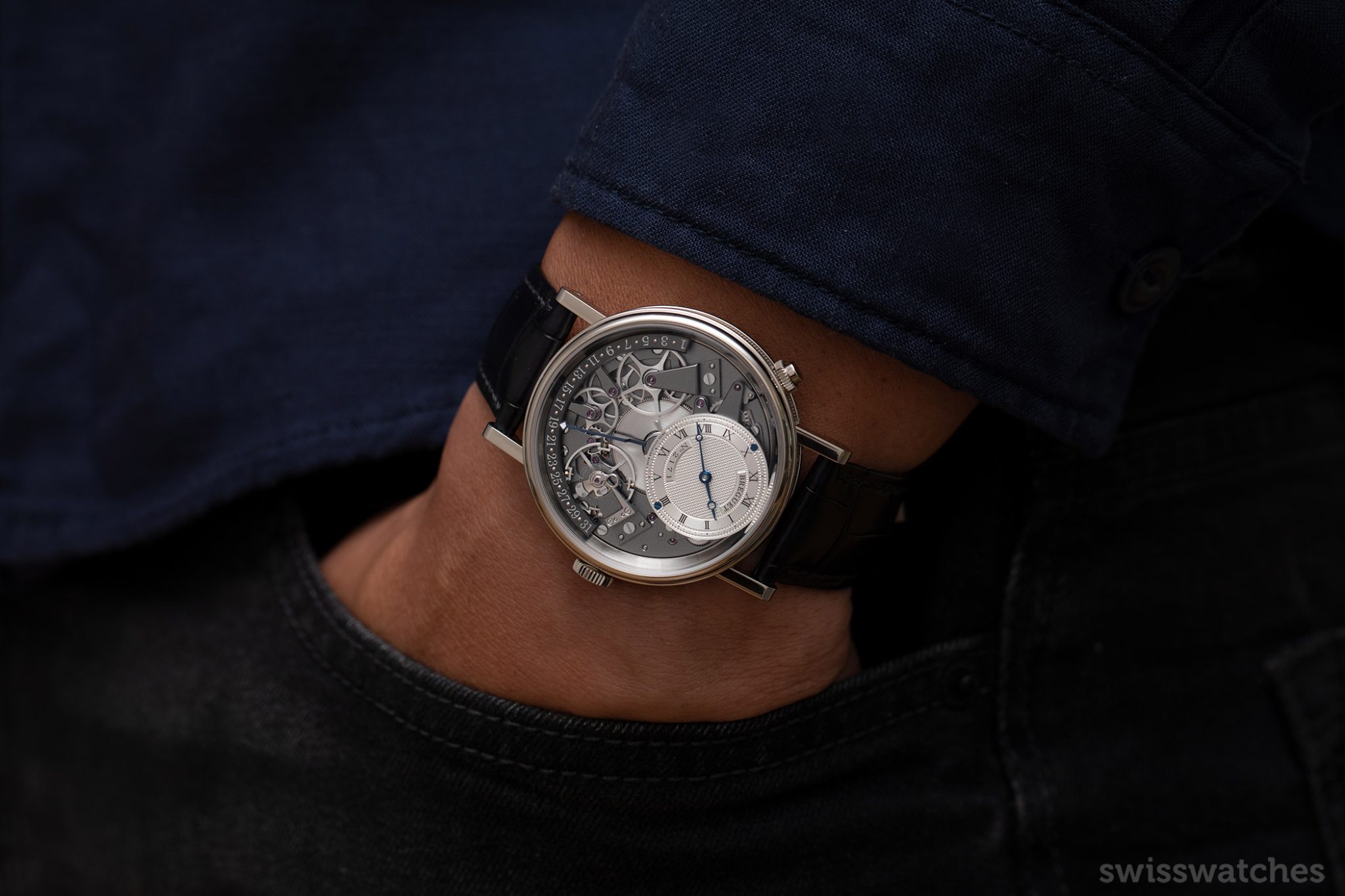
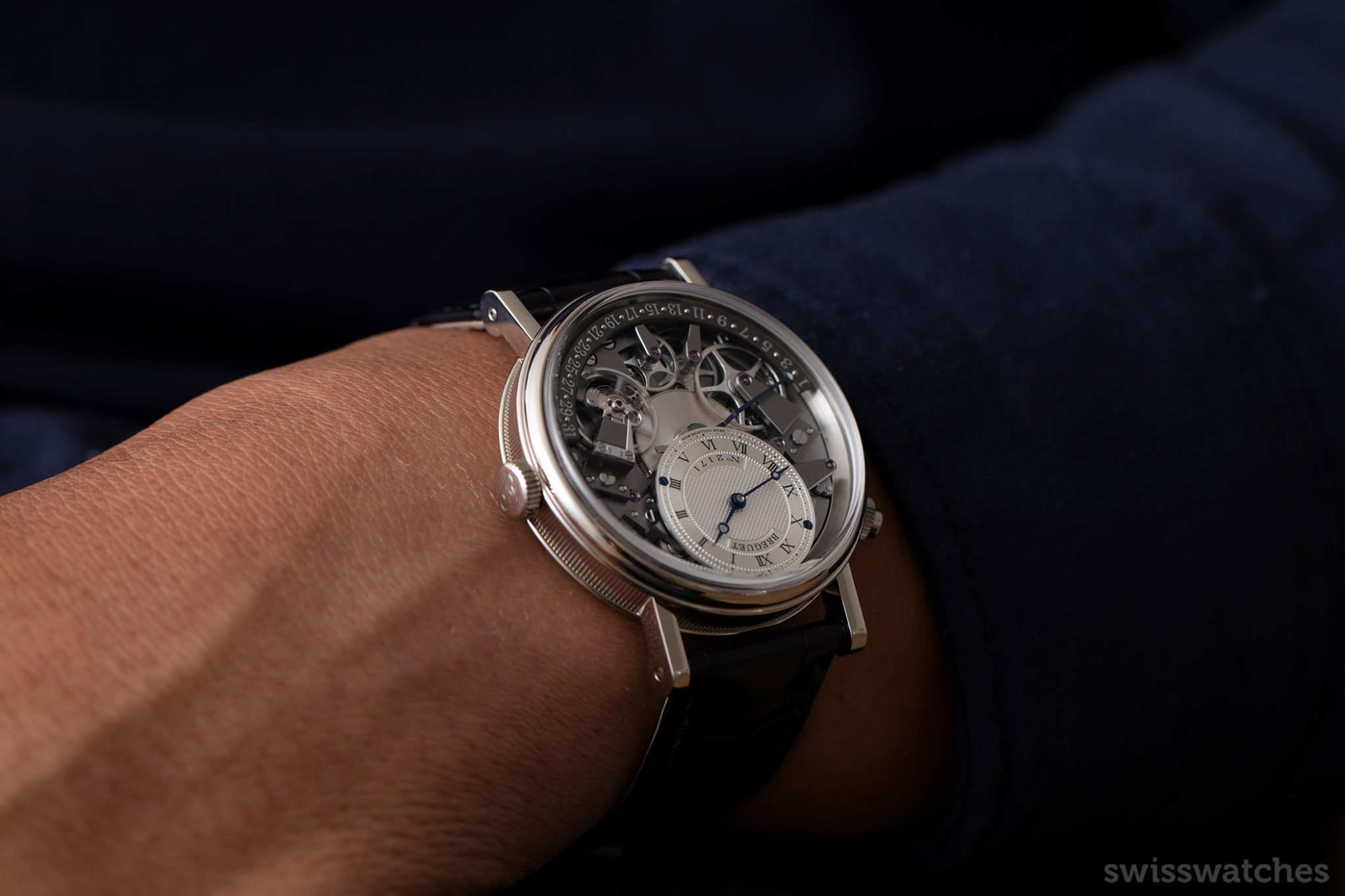
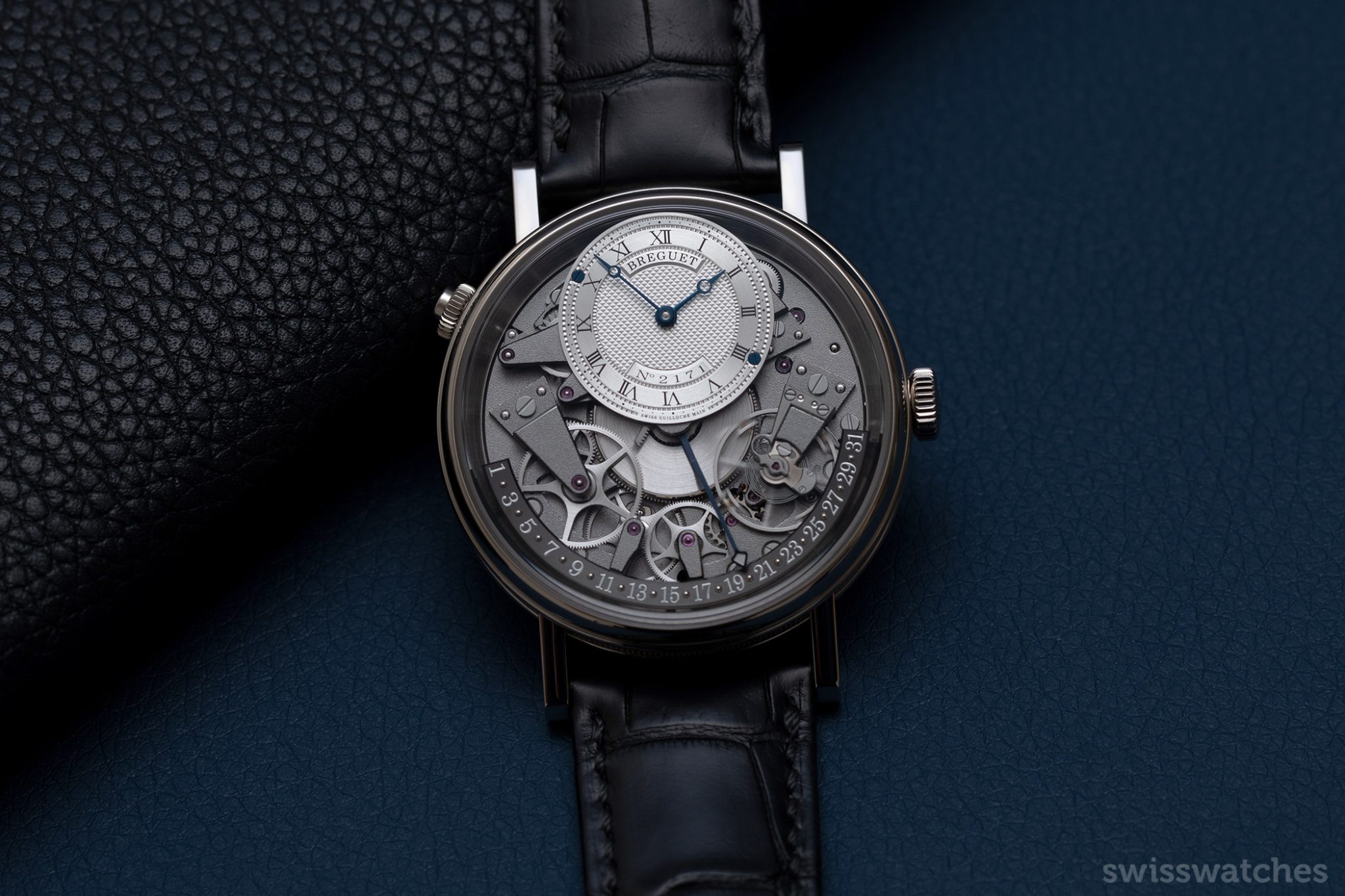
Also typical for the line is a Grenaillé finish on the movement and bridges. Furthermore, another novelty to be found in both versions is the retrograde date, which is truly spectacular. The date scale has been arranged on the dial so that it extends peripherally along the underside of the case and does not interfere with the construction of the open movement.
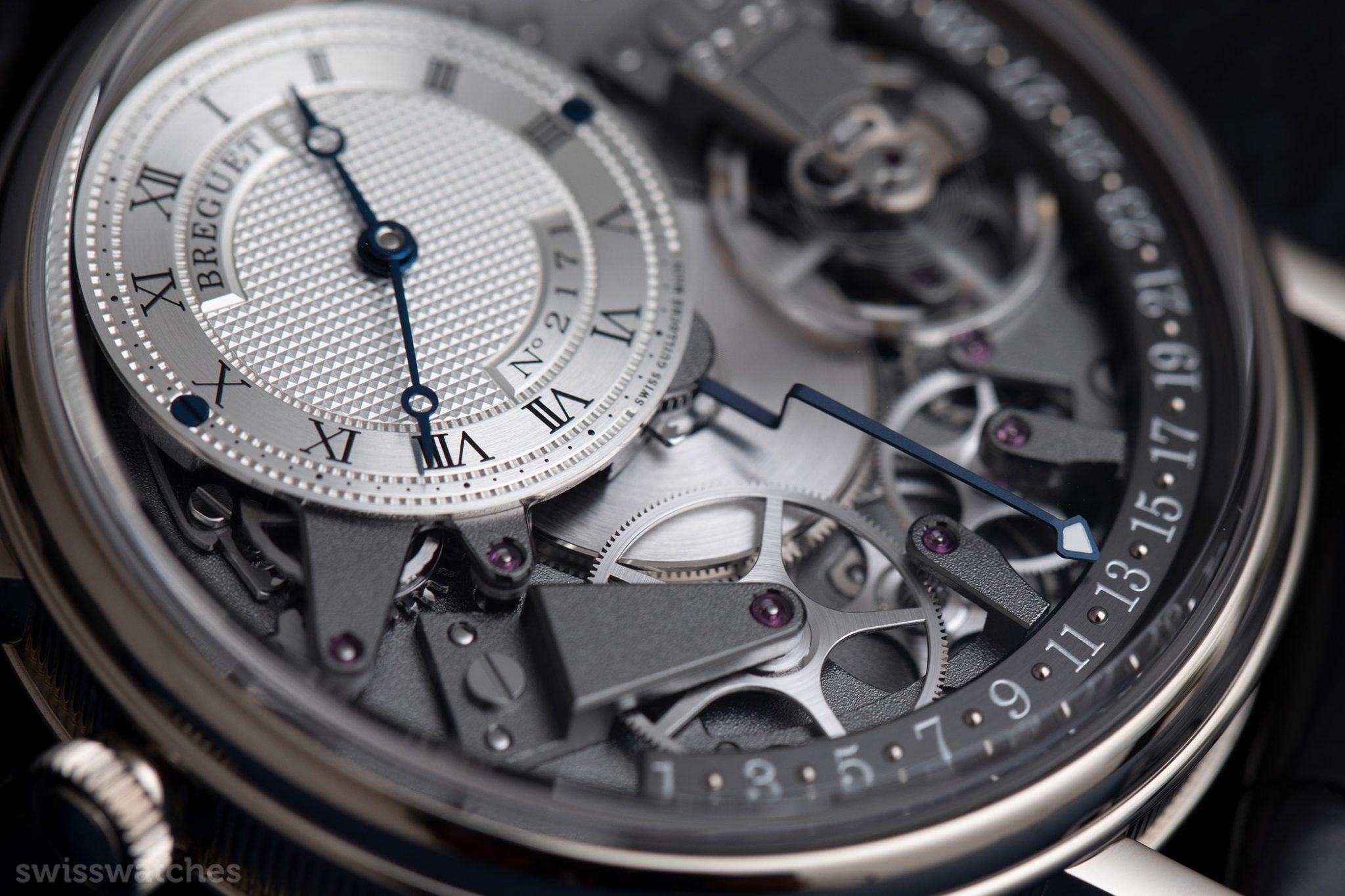
To cope with the 180-degree radius between the 1st and the 31st of the month, the date hand extends from the center. Furthermore, it is the real star of the construction. It is shaped in a way that makes it elegantly wind its way from under the dial, then over the balance wheel and then gear train. The tip of the hand also has a slight bend, which further enhances the 3-D effect of the entire dial. It is made of blued steel, which not only looks good, but takes a little bit of stiffness out of the steel and makes it softer, which surely helps it when it has to do its 180 degree jump and stops abruptly.
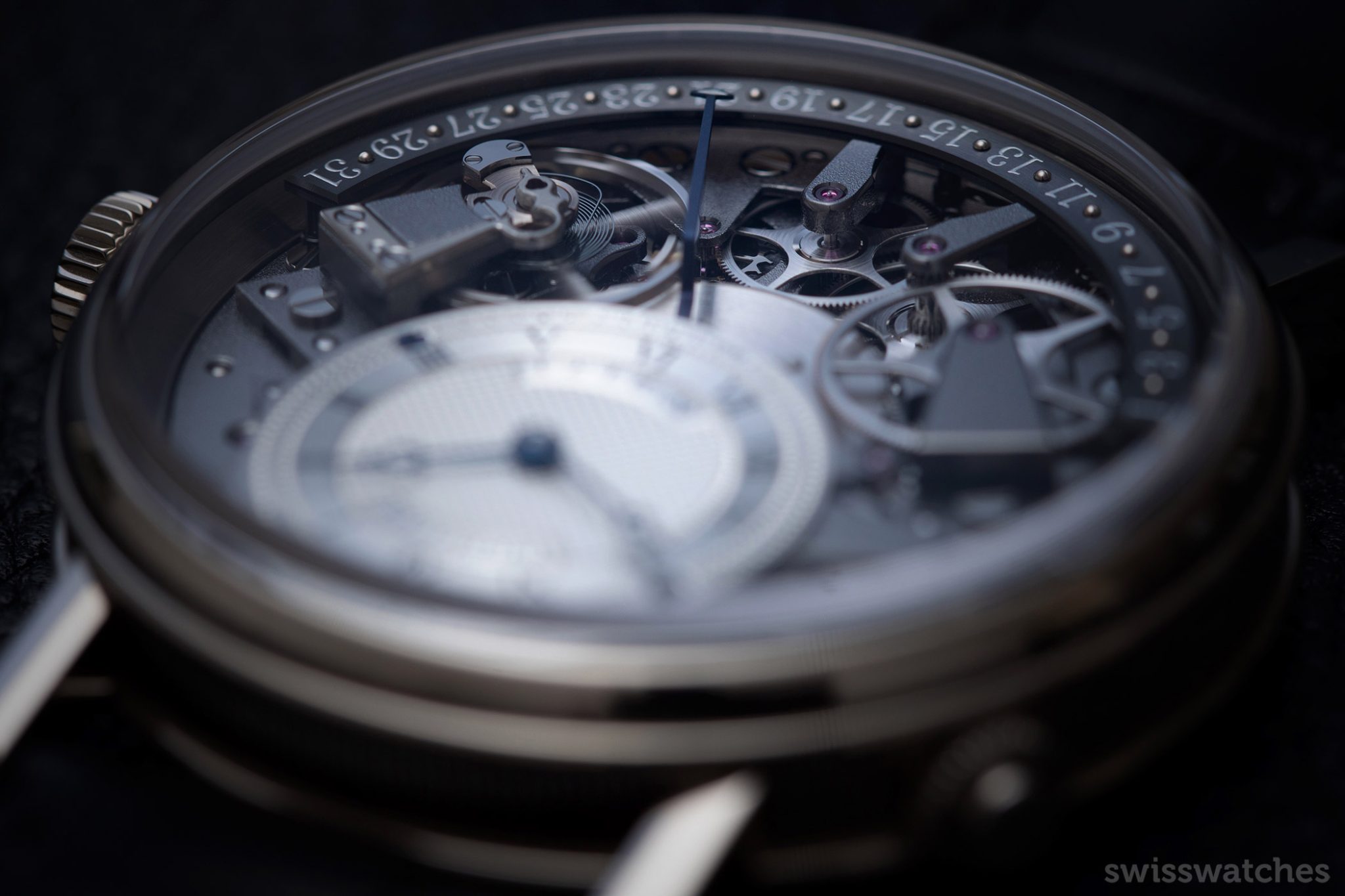
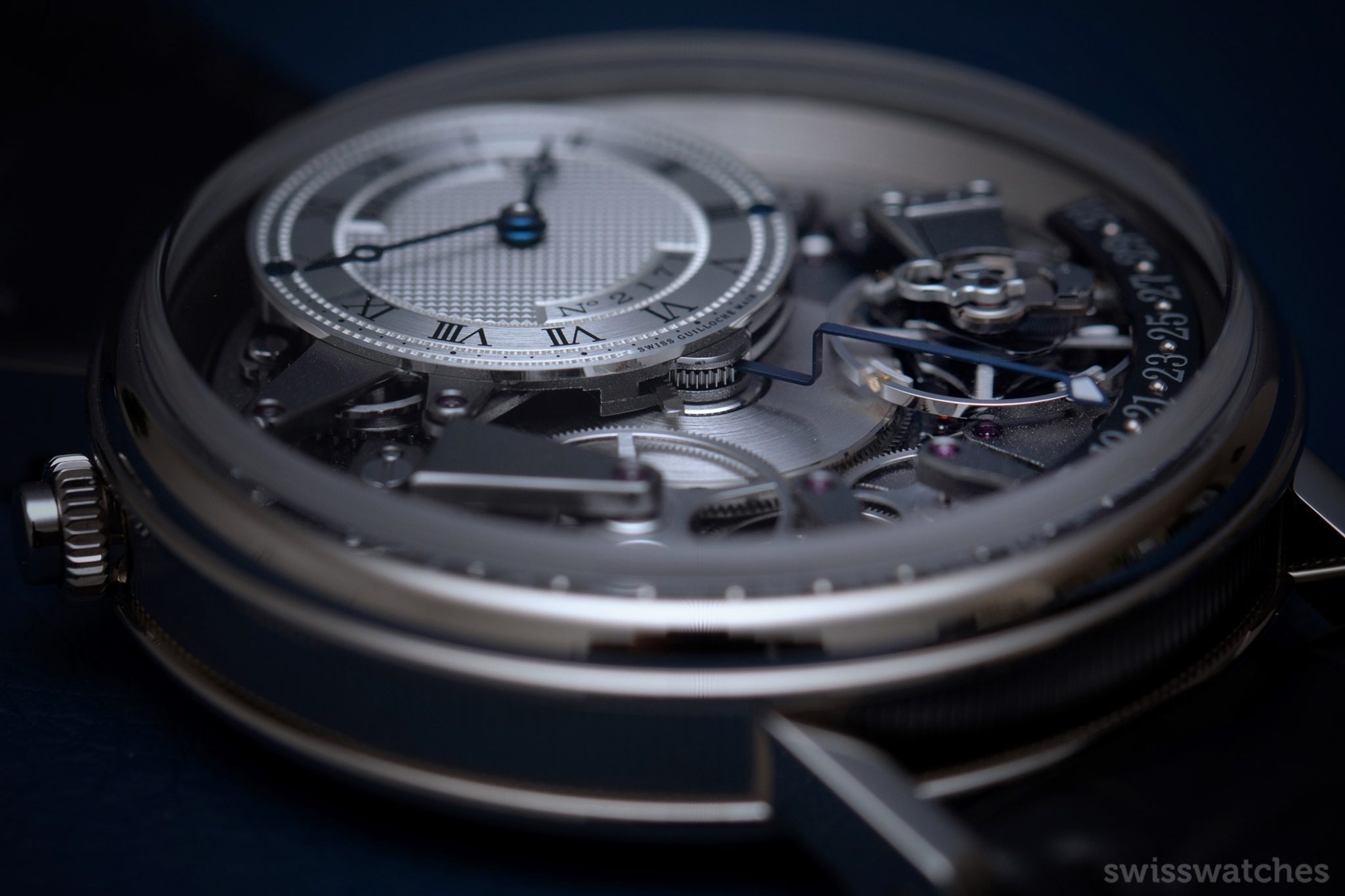
Anthracite and blue
The date scale, which is made of gold, has an anthracite finish, allowing it to match the mainplate and bridges, which are the same colour. The blued hands provide a contemporary contrast. The silver-plated gold dial features a guilloché Clous de Paris motif.
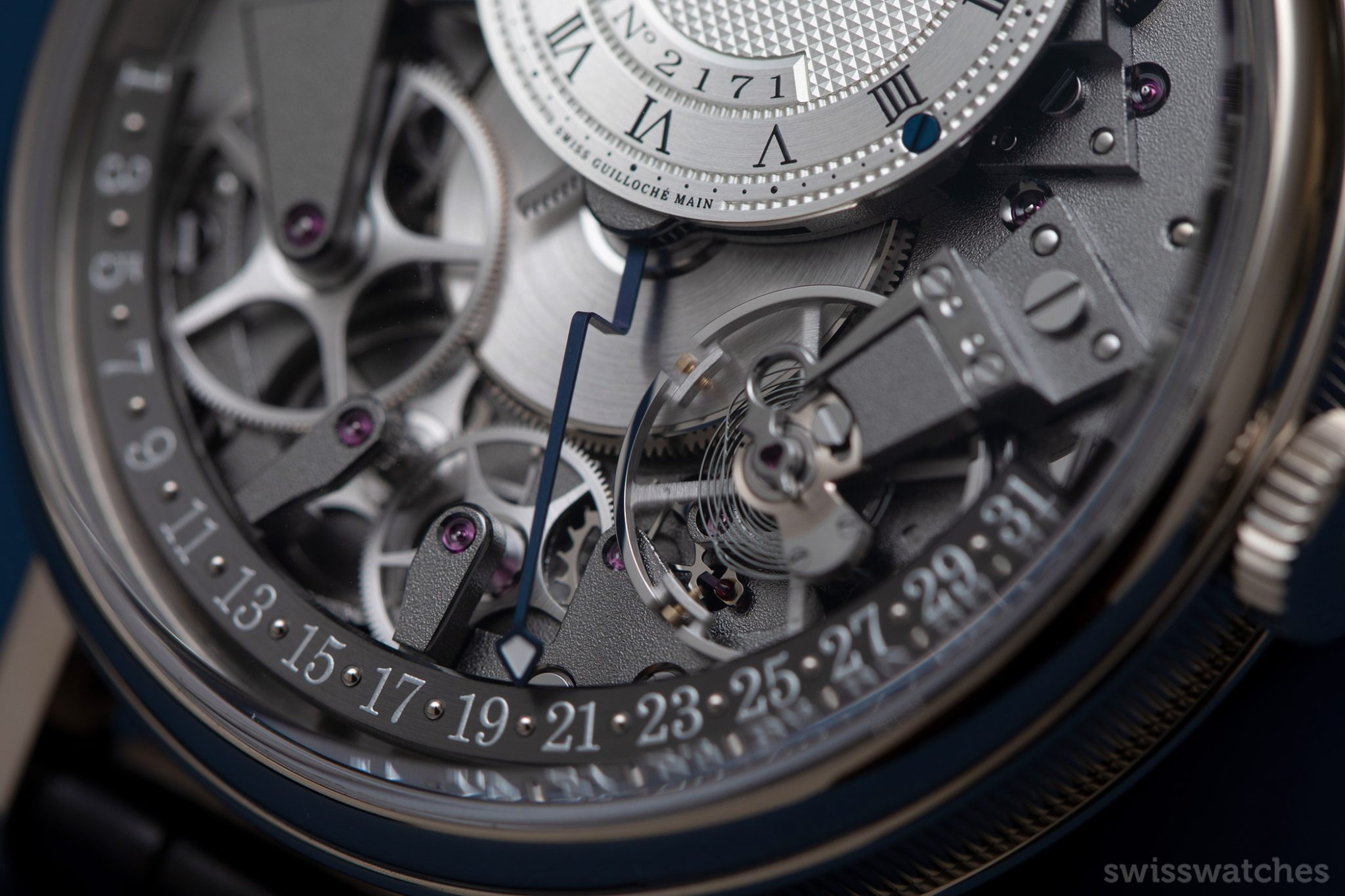
Also typical for the cases of the Tradition line is the fluted middle part of the case, as well as the slim, protruding lugs. The numerals of the date display consist of a silvered powder print.
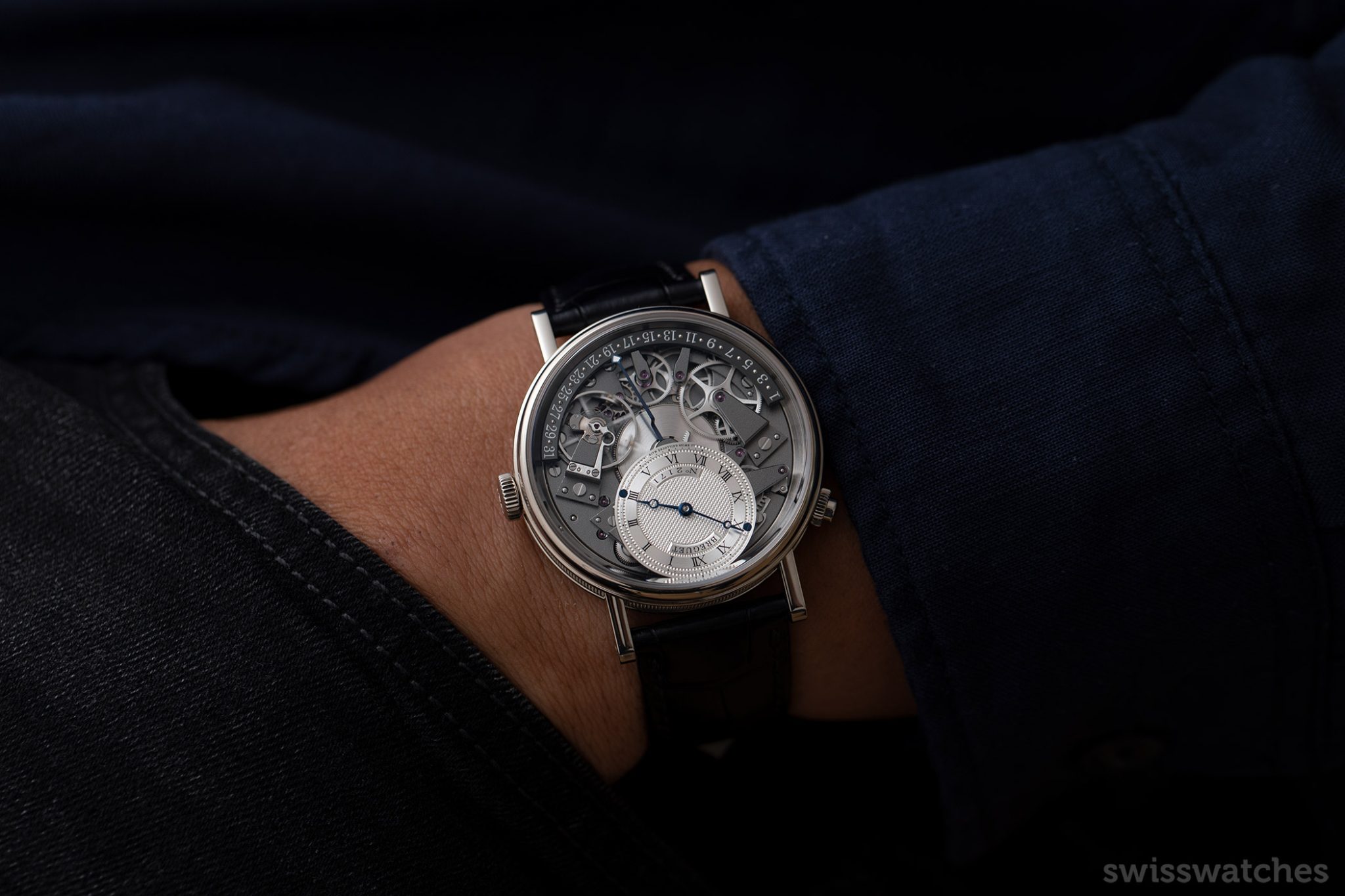
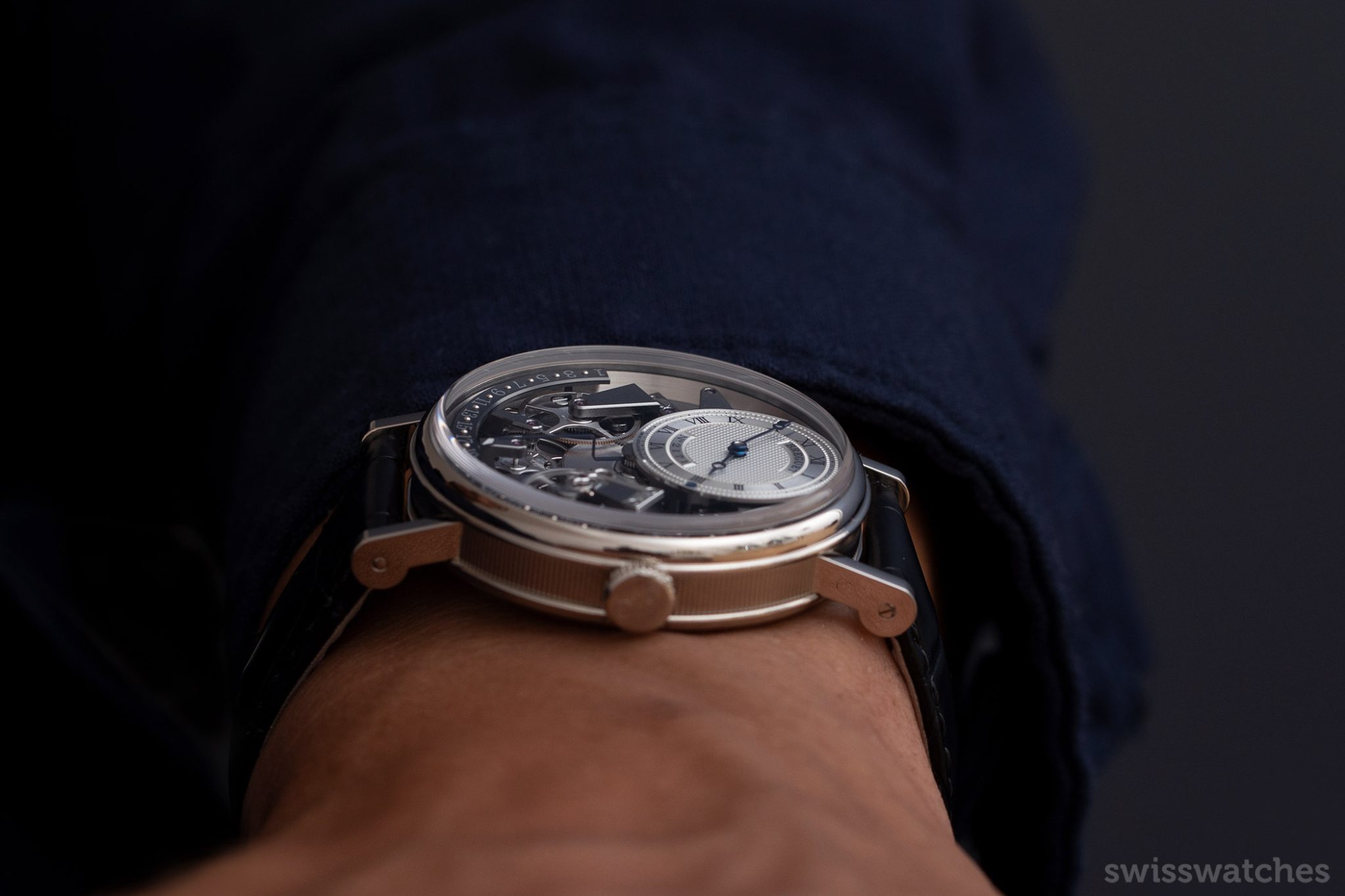
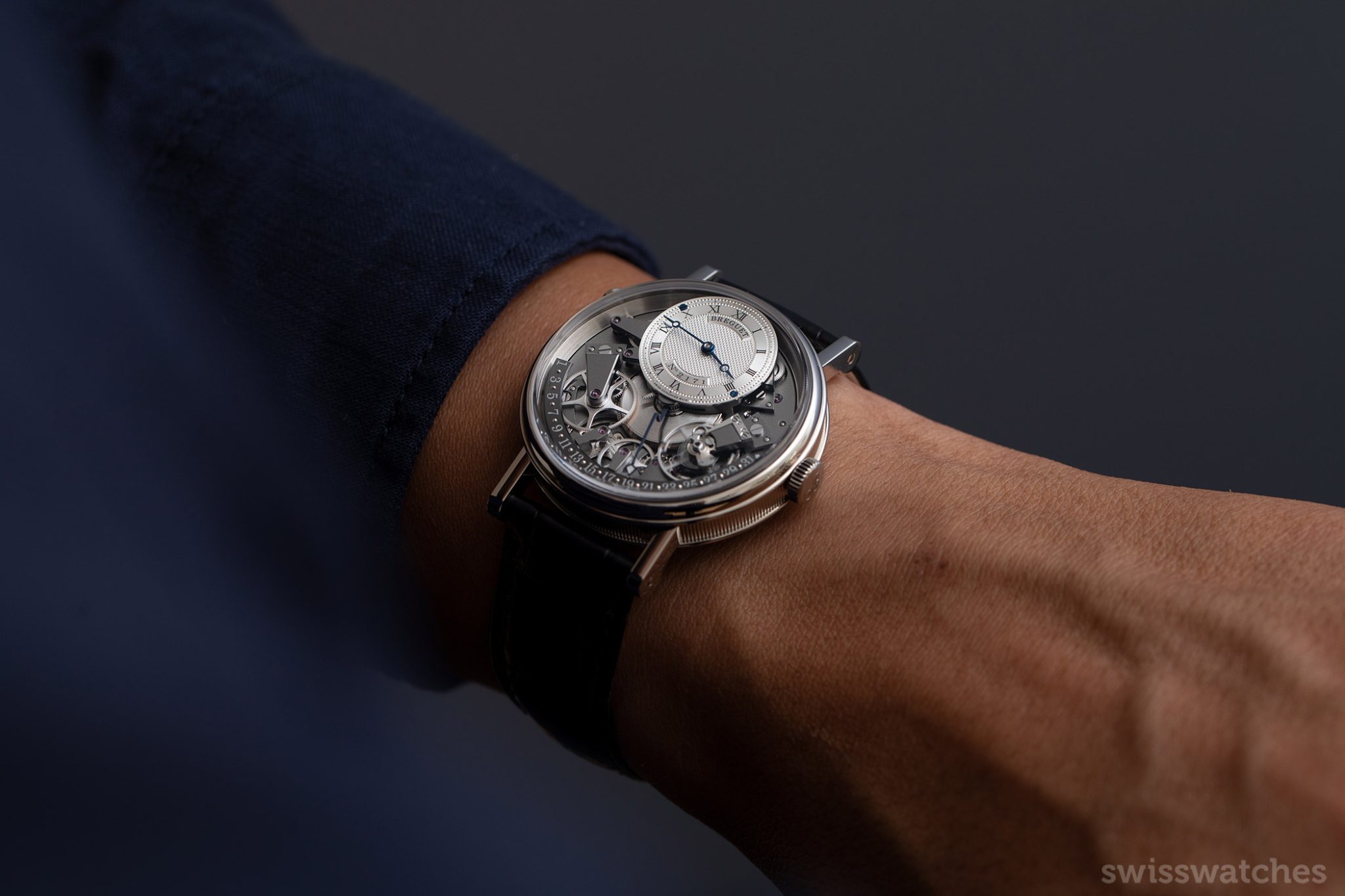
The faceted indices are gold, as is the rotor, which has a shape that takes some getting used to, and is more reminiscent of an anchor than the usual crescent-shaped oscillating weight. It is inspired by the rotor once used in the 1782 Perpétuelle watch. Additionally, it is decorated with an engraving of Breguet.
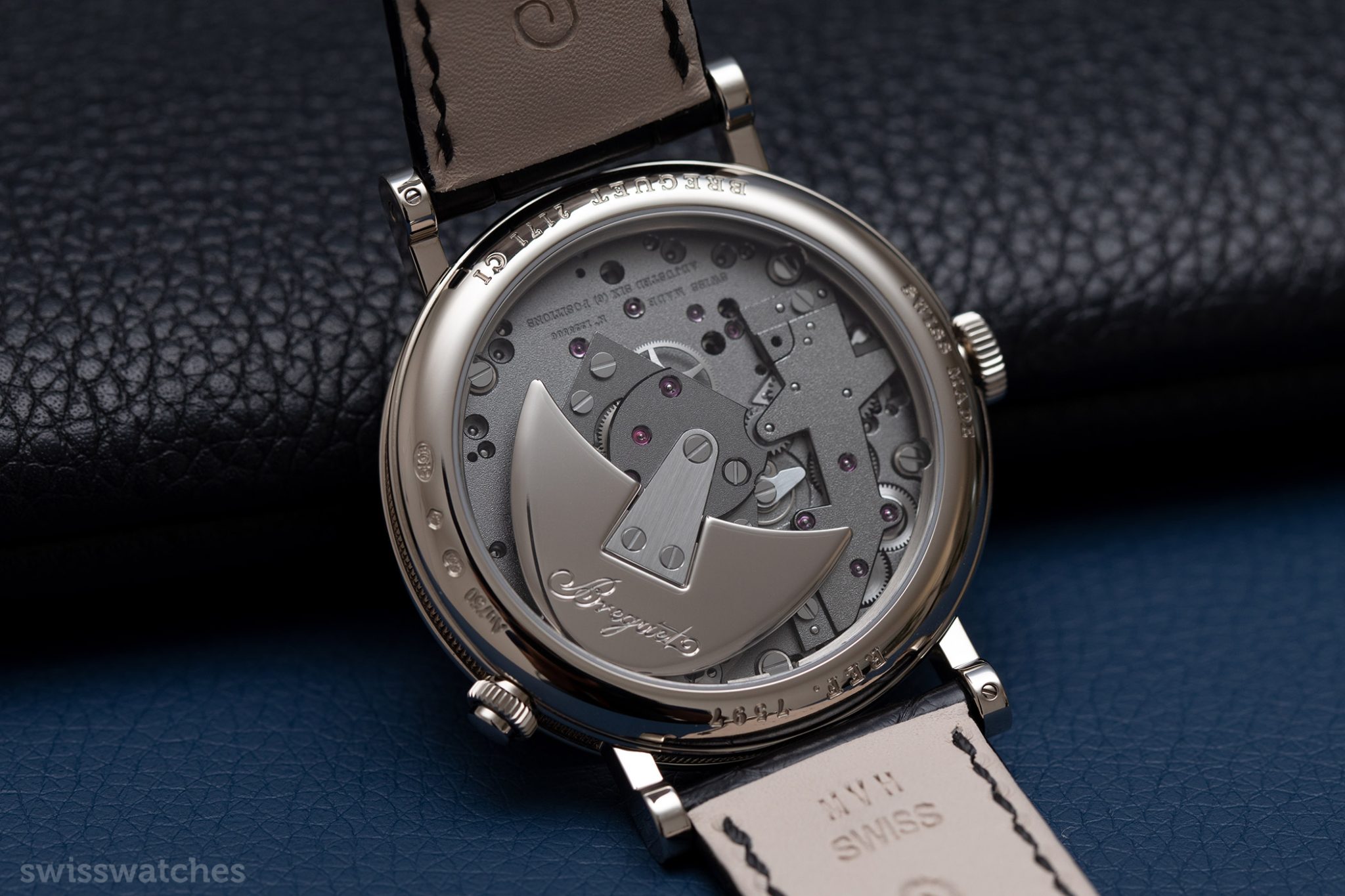
The movement – a hybrid motor
The calibre 505Q is a good demonstrator of how one can combine tradition with modernity. The movement’s architecture has been carefully modelled on Breguet’s original single-hand and touch watches. In addition to the Breguet hairspring (invented by Breguet in 1795), a “parachute” shock protection device (invented by Breguet in 1790) prevents balance pivots from breaking more easily.
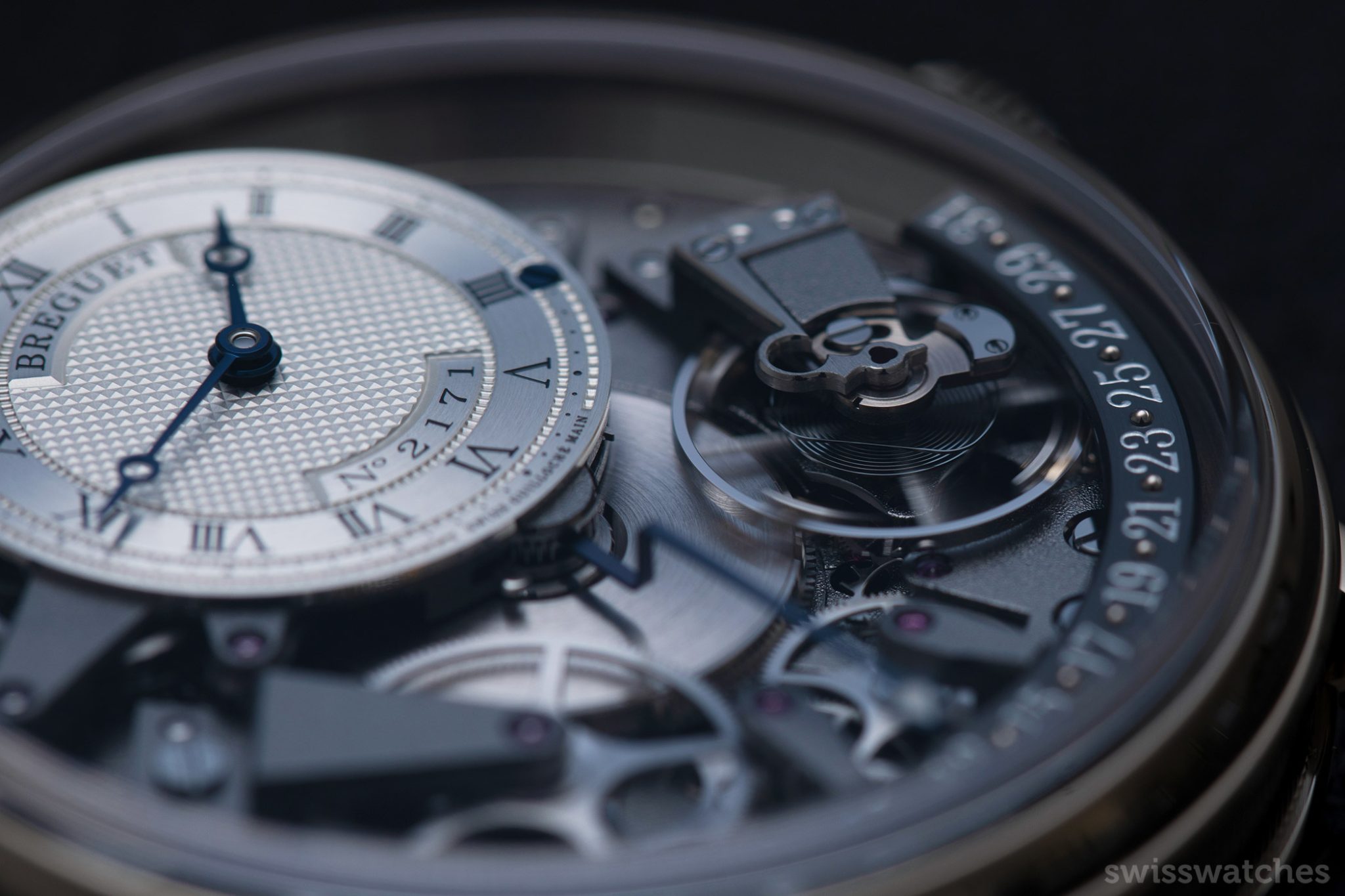
One of the horology house’s more recent achievements (since 2006), which is also used in this movement, is the use of silicon. Initially, only the escapement wheel and lever were made of silicon, but now the hairspring is also made of this material. Its great advantage is that it is anti-magnetic and particularly resistant to wear, and therefore does not require lubrication. It is also milled from a single piece, and always returns to its original shape. The calibre 505Q has a 50-hour power reserve. Finally, the push-piece for date correction is located at 10 o’clock.
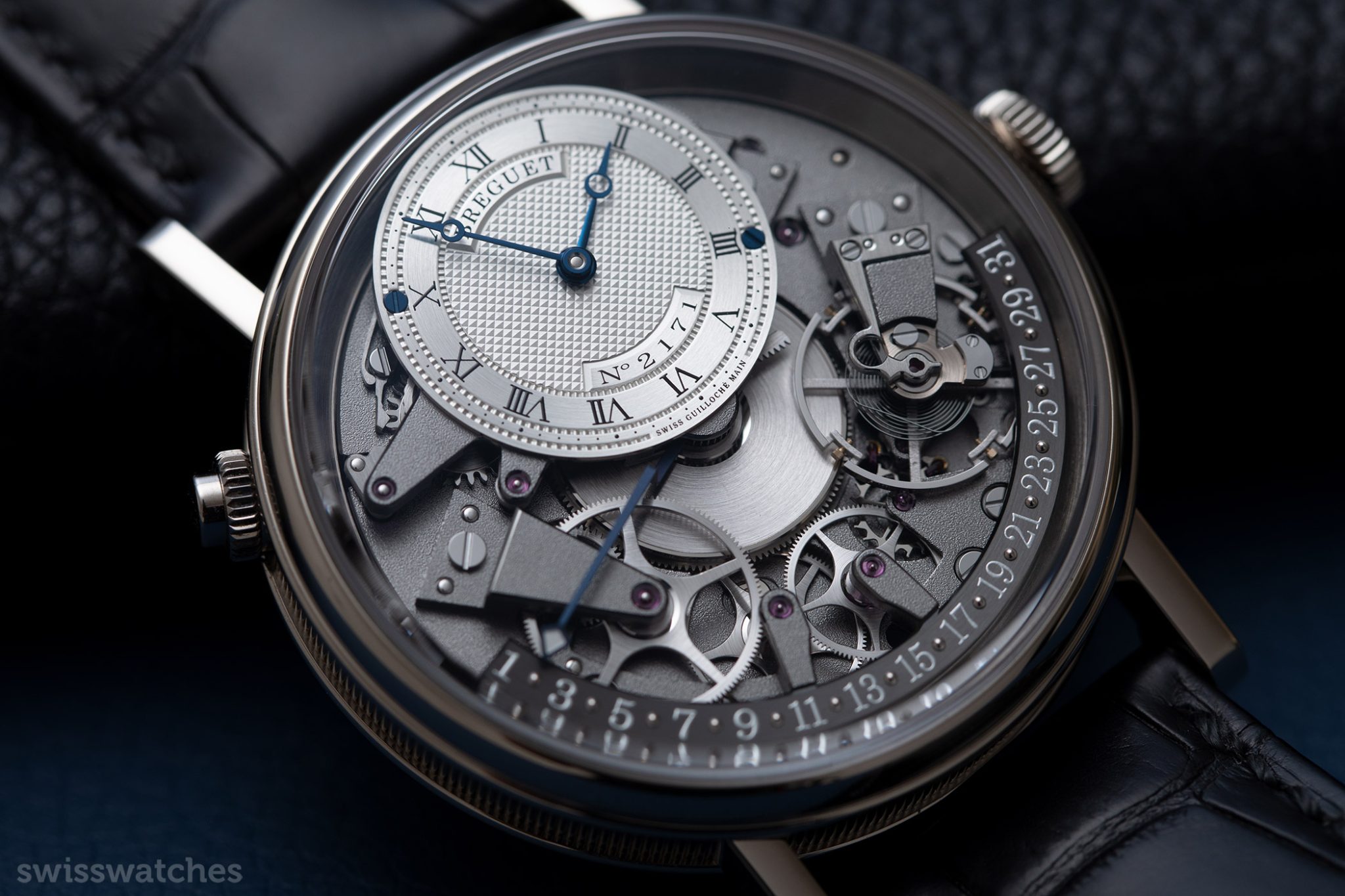
Although these days, the Tradition Quantième Rétrograde 7597 may simply be too expensive for the ‘bourgeoisie’, it is by no means a dusty old aristocratic watch. Even in the previous models (7097, 7077, 7047), the combination of anthracite and blue looked very appealing. This is now the case once again, along with the watch’s beautiful and highly sophisticated improvements. The calibre is as modern as Porsche’s V6 Turbo Hybrid engine, as enhanced technology meets high tech.
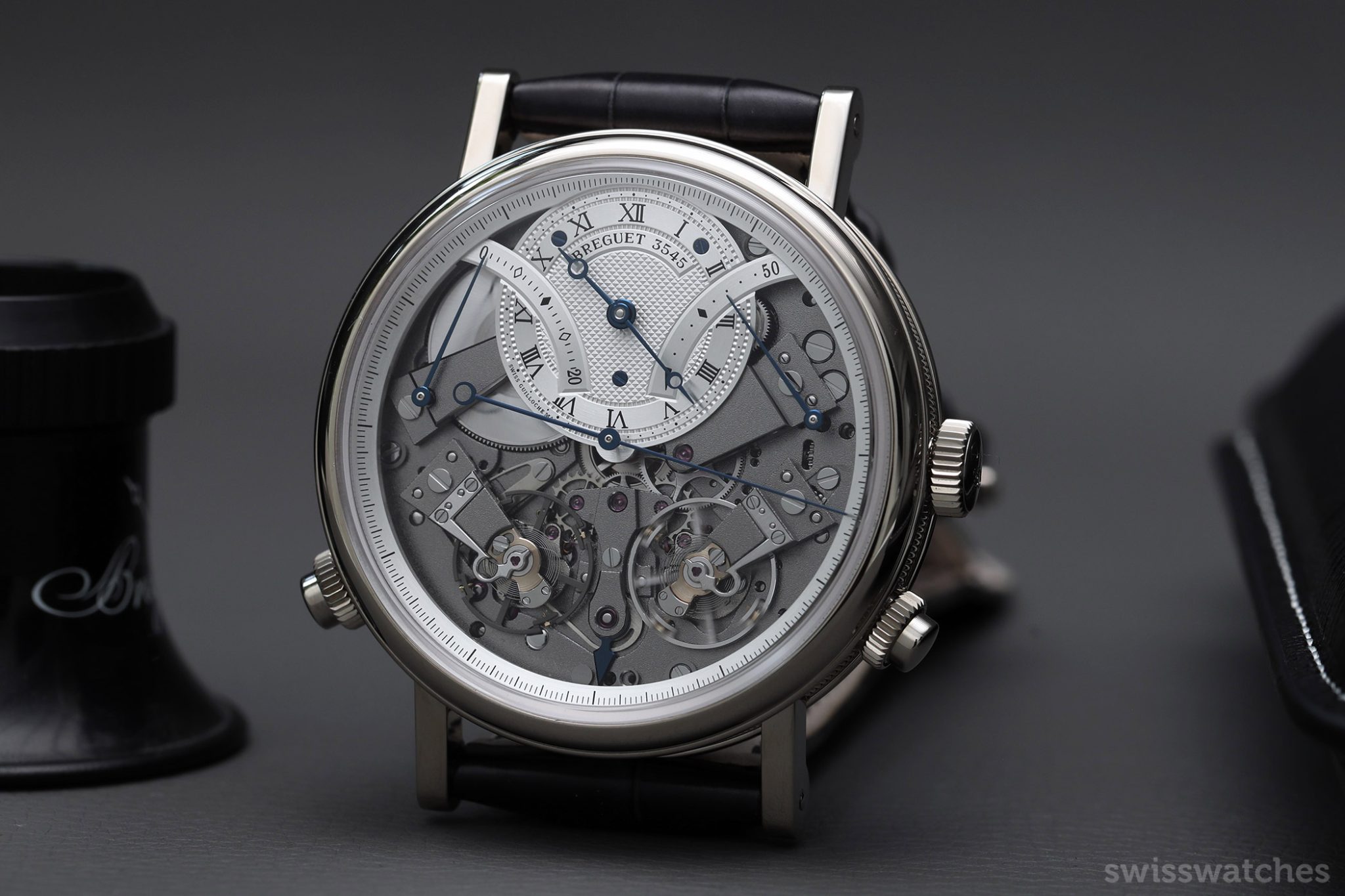
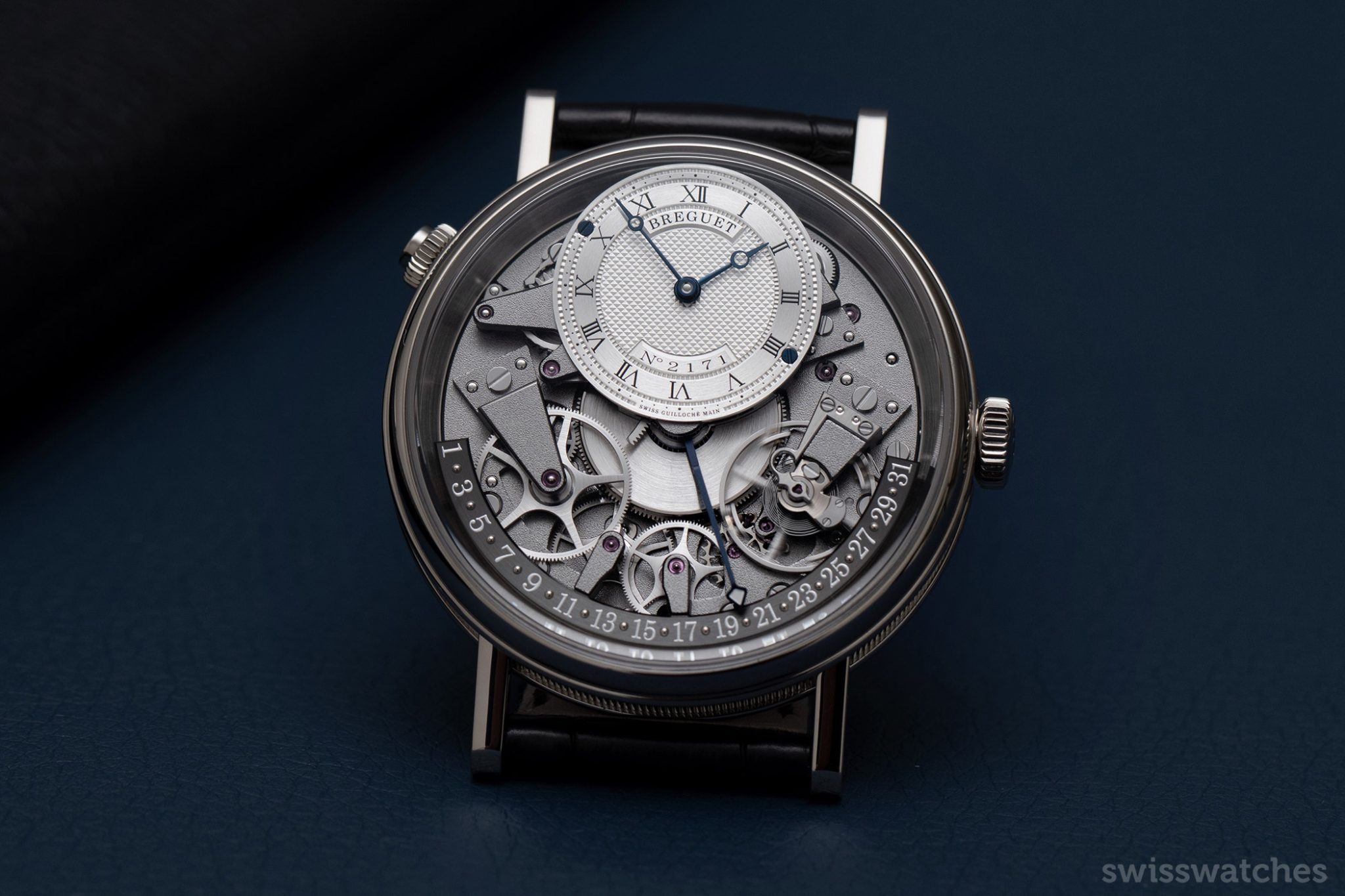
The 7597 is an avant-garde dress watch that should not only be worn at night with shirt and cufflinks as you attend a concert, and just don’t lock it away in the safe the rest of the time. You can expect a bit of action from it in everyday life – after all, it has a reliable shock protection that has proven itself for no less than 230 years. Prices: 35,540 euros in rose gold and 36,310 euros in white gold.
